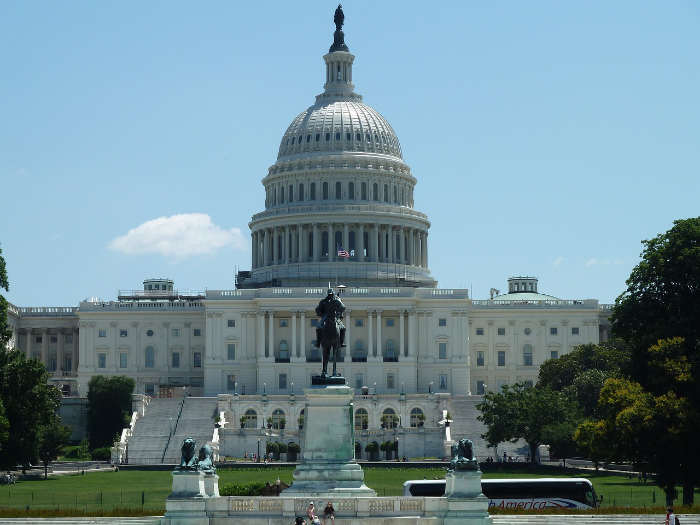Corporate Tax Rates by State 2025
Minimum
State | Minimum↓ | Maximum | Brackets Minimum | Brackets Maximum | Additional Details | |
|---|---|---|---|---|---|---|
| Minnesota | 9.8% | $0 | ||||
| Illinois | 9.5% | $0 | Illinois’ rate includes two separate corporate income taxes, one at a 7% rate and one at a 2.5% rate. | |||
| Pennsylvania | 8.99% | $0 | Pennsylvania permits gross receipts taxes at the local (but not state) level. | |||
| California | 8.84% | $0 | ||||
| Delaware | 8.7% | $0 | Delaware has gross receipts taxes in addition to corporate income taxes. | |||
| District of Columbia | 8.25% | $0 | ||||
| Maryland | 8.25% | $0 | ||||
| Massachusetts | 8% | $0 | ||||
| Wisconsin | 7.9% | $0 | ||||
| Connecticut | 7.5% | $0 | Connecticut has historically charged a 10% surtax on a business’s tax liability if it has gross proceeds of $100 million or more, or if it files as part of a combined unitary group. This surtax must be extended by the legislature on occasion and could expire in the near future. | |||
| New Hampshire | 7.5% | $0 | ||||
| Rhode Island | 7% | $0 | ||||
| Montana | 6.75% | $0 | ||||
| Oregon | 6.6% | 7.6% | $0 | $1.00 Mn | Oregon has gross receipts taxes in addition to corporate income taxes. | |
| Alabama | 6.5% | $0 | ||||
| New Jersey | 6.5% | 11.5% | $0 | $1.00 Mn | In New Jersey, the rates indicated apply to a corporation’s entire net income rather than just income over the threshold. A temporary and retroactive surcharge is in effect from 2020 to 2023, bringing the rate to 11.5% for businesses with income over $1 million. | |
| New York | 6.5% | 7.3% | $0 | $5.00 Mn | ||
| Tennessee | 6.5% | $0 | Tennessee has gross receipts taxes in addition to corporate income taxes. | |||
| West Virginia | 6.5% | $0 | West Virginia permits gross receipts taxes at the local (but not state) level. | |||
| Michigan | 6% | $0 | ||||
| Vermont | 6% | 8.5% | $0 | $25,000 | ||
| Virginia | 6% | $0 | Virginia permits gross receipts taxes at the local (but not state) level. | |||
| Idaho | 5.8% | $0 | ||||
| Georgia | 5.75% | $0 | Georgia’s corporate income tax rate will revert to 6% on January 1, 2026. | |||
| Nebraska | 5.58% | 7.3% | $0 | $100,000 | ||
| Florida | 5.5% | $0 | ||||
| Iowa | 5.5% | 8.4% | $0 | $100,000 | ||
| Kentucky | 5% | $0 | ||||
| South Carolina | 5% | $0 | ||||
| Arizona | 4.9% | $0 | ||||
| Indiana | 4.9% | $0 | ||||
| Utah | 4.85% | $0 | ||||
| New Mexico | 4.8% | 5.9% | $0 | $500,000 | ||
| Colorado | 4.4% | $0 | ||||
| Hawaii | 4.4% | 6.4% | $0 | $100,000 | ||
| Kansas | 4% | 7% | $0 | $50,000 | ||
| Mississippi | 4% | 5% | $5,000 | $10,000 | ||
| Missouri | 4% | $0 | ||||
| Oklahoma | 4% | $0 | ||||
| Louisiana | 3.5% | 7.5% | $0 | $150,000 | ||
| Maine | 3.5% | 8.9% | $0 | $3.50 Mn | ||
| North Carolina | 2.5% | $0 | ||||
| North Dakota | 1.41% | 4.3% | $0 | $50,000 | ||
| Arkansas | 1% | 5.3% | $0 | $25,000 | ||
| Alaska | 9.4% | $0 | $222,000 | |||
| Nevada | $0 | Nevada does not have a corporate income tax but does have a gross receipts tax with rates not strictly comparable to corporate income tax rates. | ||||
| Ohio | $0 | Ohio does not have a corporate income tax but does have a gross receipts tax with rates not strictly comparable to corporate income tax rates. | ||||
| South Dakota | $0 | No corporate taxes. | ||||
| Texas | $0 | Texas does not have a corporate income tax but does have a gross receipts tax with rates not strictly comparable to corporate income tax rates. | ||||
| Washington | $0 | Washington does not have a corporate income tax but does have a gross receipts tax with rates not strictly comparable to corporate income tax rates. | ||||
| Wyoming | $0 | No corporate taxes. |
Forty-four American states levy a corporate income tax, ranging from 2.5 percent in North Carolina to 12 percent in Iowa. Four states—Nevada, Ohio, Texas, and Washington—impose a “gross receipts tax” on sales and receipts instead of a corporate income tax, while Delaware, Pennsylvania, Virginia, and West Virginia levy a gross receipts tax in addition to a corporate income tax. South Dakota and Wyoming are the only states that do not levy a corporate income or gross receipts tax.
Thirty-four states and the District of Columbia have single-rate corporate tax systems, while the remainder has rates that vary by income bracket. Iowa has the highest top statutory corporate tax rate at 12 percent, followed by New Jersey (11.5 percent), Pennsylvania (9.99 percent), and Minnesota (9.8 percent).
Meanwhile, eight states have a top rate of 5% or below:
- Arizona
- Colorado
- Kentucky
- Mississippi
- North Carolina
- North Dakota
- South Carolina
- Utah
Even in states with high corporate tax rates, however, these taxes collect relatively little revenue, since companies are able to engage in extensive tax planning to reduce their income. Corporate income taxes account for an average of just 3.38 percent of state tax collections and 2.24 percent of state general revenue.
The federal corporate tax is based on a percentage of the income that a company or corporation generates within the United States. The corporate tax rate in the U.S. ranges based on income bracket from 15 percent to 35 percent.



















